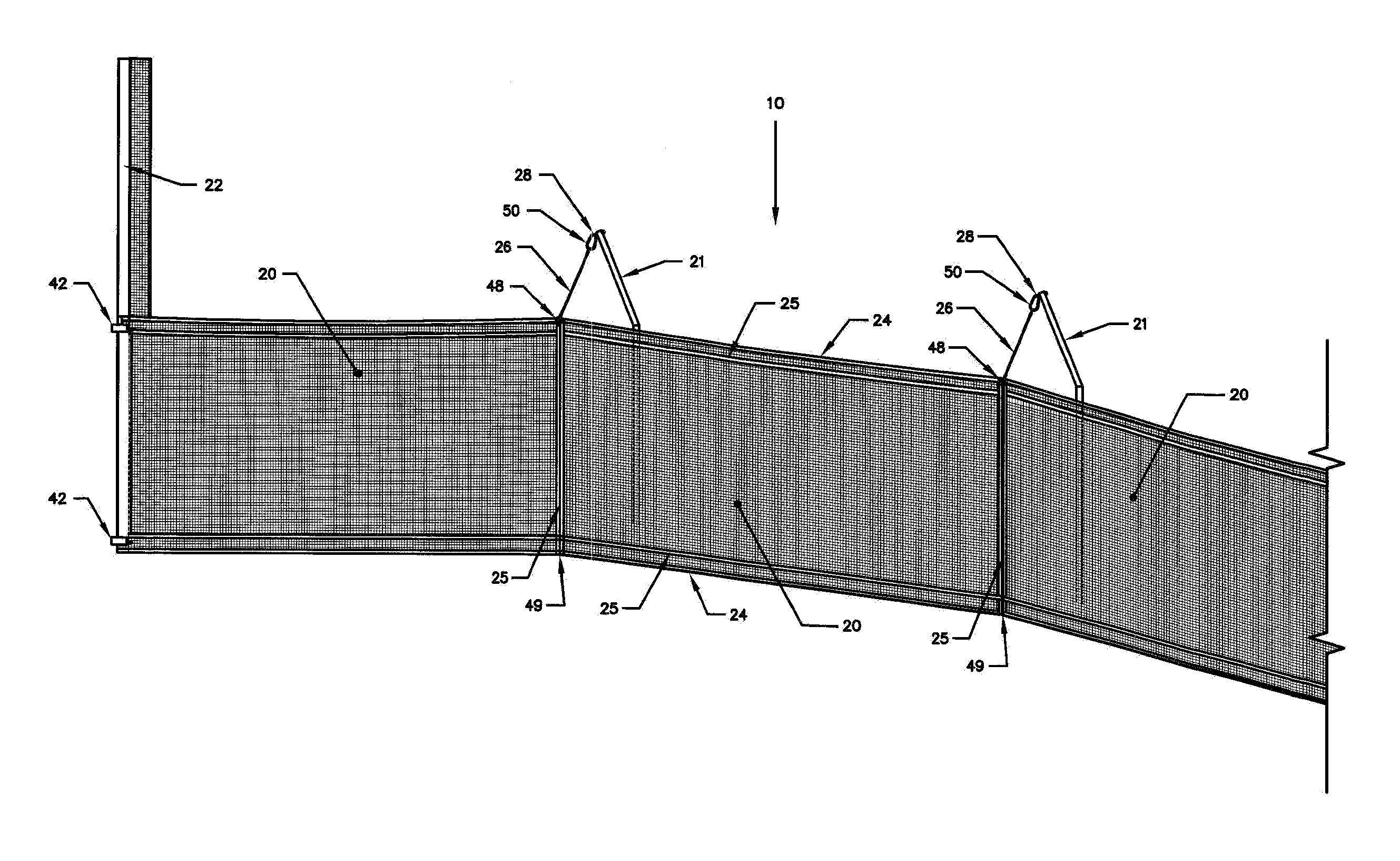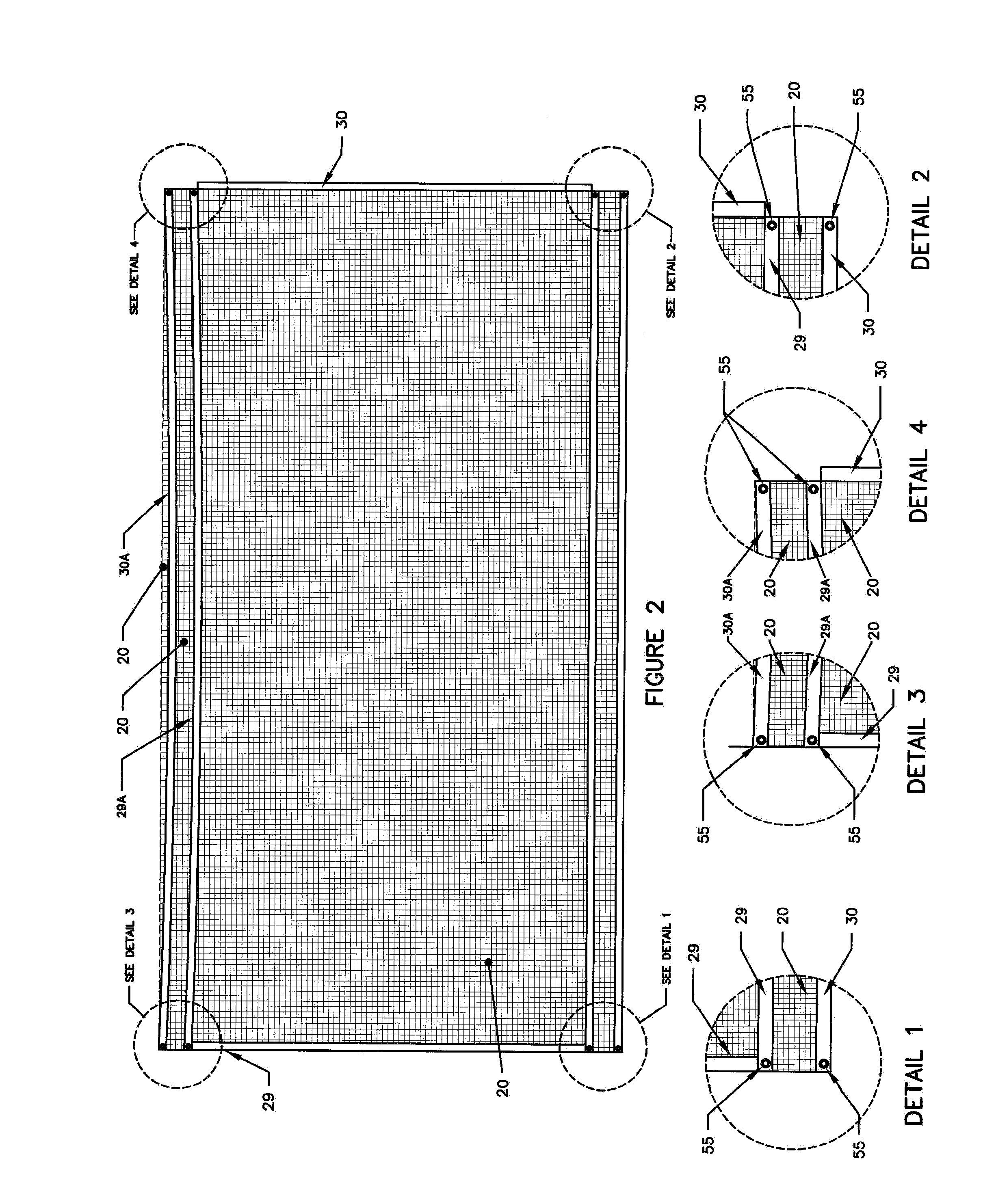Injury to the player is likely where the fence is made of rigid materials.
Misjudgment leads to either unnecessary reluctance of the player to field a ball or to injury.
These problems are more serious for younger, inexperienced players, such as Little League, junior high school, and high school players than for collegiate and professional players.
The weight of the fence, however, makes these materials unsuitable.
In addition to allowing the fence material to sag, they lack the resilience to restore the fence to its original configuration after it deflects from
impact.
This situation arises, not from financial limitations (costs of erecting and maintaining fences) but from safety considerations:
preventing injury to players.
Moving the outfield fence closer to home plate and thus bringing it into play (thereby improving “playability”) is simply too dangerous if the fence is a
solid structure, such as plywood / post or chain-link.
Examples from the prior art address safety from both aspects, “playability” and “
continuation of play,” without achieving a satisfactory solution.
This fence cannot contain the
impact at full force of a player running at full speed.
The “mesh net” boundary fence cannot be adapted to protect players on a baseball or softball field, as the mesh is anchored and is secured directly to the
solid support posts.
Thus the fence of Leonard et al. presents a
significant risk of injury to a player who runs into it.
. . deflect under the weight of impact.” Though this design is not a
solid structure and therefore poses no
threat of impact injury, it cannot prevent the player from literally toppling over the fence as it collapses.
Moreover, the height of the fence of Schmanski & Landis makes it possible for a player to jump high enough, while reaching for a ball, to go over the fence backwards, thereby risking a
head injury.
The pull of the player's legs against the fence may not be sufficient to cause the fence to collapse completely yet be strong enough to cause players to topple onto their heads.
U.S. Pat. No. 5,029,819 (Jul. 9, 1991) to Kane for “Handling and Supporting Flexible Material of a Fence” also discloses mesh material directly attached to rigid support posts, thereby creating a
threat of injury if applied to an outfield fence for a baseball or softball field.
Brower's fence posts “either bend or break to avoid injury to the player.” A broken post is itself a risk to the player who falls on it.
Like the fence of Schmanski & Landis, the height of Brower's fence also poses a
hazard if players end up on their heads.
U.S. Pat. No. 6,176,471 (Jan. 23, 2001) to Naegele and Loven for a “Fabric Fence
System” also discloses mesh affixed directly to a rigid support structure that includes both vertical and cross members, thereby creating a
threat of injury to players.
Penning discloses a framed structure of insufficient height and flexibility.
Thus Penning's fence cannot provide both mitigation of the risk of injury and
continuation of play.
The verticality of a fall by the player increases the chance of injury because a structure framed or supported by posts offers increased resistance along its
vertical plane.
Thus a player near the fence who jumps vertically to catch a ball may, because of the fence's short height, fall vertically, thereby challenging the fence's vertical strength.
Posts or other framing may cause serious injury to the player by offering significant resistance to a downward force exerted by a falling player.
In addition, none of the structures of the prior art as assembled respond to the effects of high winds.
 Login to View More
Login to View More  Login to View More
Login to View More 


